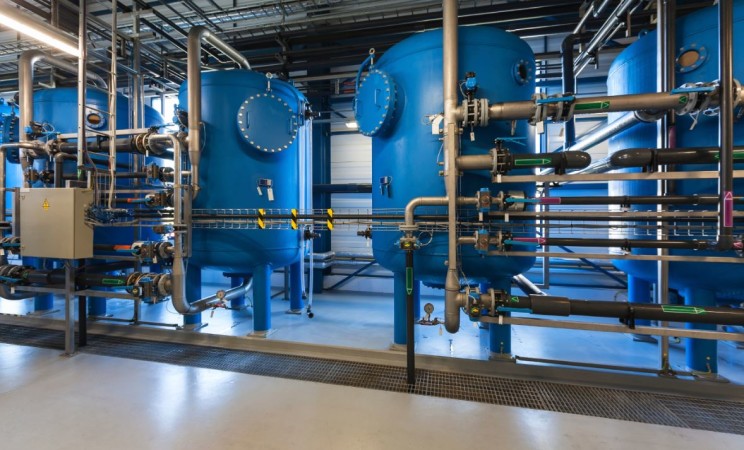Intake air
When a compressor is working it is sucking in air from the atmosphere. The weather on the day will affect how much water vapour is sucked into the compressor along with the air. A warm sunny day will have moderate levels of water vapour, a cold sunny day will have low levels of water vapour, a hot sticky, thundery day will have very high levels of water vapour, a cold rainy day will have moderate levels of water vapour.
Air sucked into the compressor will always be filtered to remove any dirt of particles from the air, but this doesn’t affect the amount of water vapour sucked into the compressor.
Compression stage
When the compressor compresses the air, the air gets hot. Most lubricated compressors use the lubrication oil to cool the compressor and to cool the compressed air during the compression stage. The result is high temperature (90’C) compressed air with high levels of oily mist in the air. Since the temperature of the air is now very high the water vapour in the original air remains as a vapour, so the vapour is carried along with the compressed air.
First stage Separator
The first separator is usually included within the compressor its self. In the separator the air velocity slows down and the majority of the oil falls to the bottom of the separator as a liquid and gets recycled. The temperature in the separator remains high so the water vapour remains in the compressed air.
Air cooler
The first stage air cooler is usually incorporated within the compressor. At this point the compressed air is cooled and the water vapour condenses out as liquid water. The cooled air with its liquid water is usually then blown into a big tank or air receiver, where the compressed air is stored. It is in the receiver that the liquid water drips to the bottom of the tank and form a pool.
The Air Receiver
The compressed air in the receiver continues to cool and more water vapour condenses to form liquid water which runs down the sides of the receiver to add to the puddle of water at the bottom of the air receiver. Additionally, due to the size of the air receiver the air in the receiver stops moving allowing some more of the oil mist that managed to get through the separator to fall out of the air and to also run to the bottom of the air receiver. The resulting puddle at the bottom of the receiver is a mix of water and oil.
Given time, the compressed air in the receiver will cool to the ambient temperature on the day. This means that at best the compressed air in the receiver will be saturated so any further cooling will make more water condense out.
Pipework
This is ok on a hot sunny day but if it cold outside and the compressed air pipework runs along the outside wall of the building water will condense in the pipe on its way to the process machines
Dryers
There are two main types of dryer available on the market today, refrigeration dryers and desiccant dryers.
Refrigeration Dryers – These work by cooling the compressed air to 2’C. The vapour in the compressed air condenses out down to level where the air is saturated at 2’C. Note there is still a small amount of water remaining as vapour in the air and if the temperature of the air is cooled below 2’C more water will condense out. This is important for compressed air pipes that run outside the building in cold weather.
Refrigerant dryers typically reduce the dew point of the compressed air to 2’C
The liquid water is collected and the air is heated back up to ambient temperature before it leaves the dryer. Note: the temperature of the air leaving a dryer is more or less the same as the temperature it enters the dryer, despite it being cooled within the refrigeration dryer.
Dessicant Dryers – These work by chemically removing the water vapour from the compressed air. They use chemicals to absorb the water vapour. Usually there are two chambers of the chemicals. One is used to take vapour out of the air whilst the other chamber is being ‘regenerated’ so it can work again. The chambers swap over at regular intervals
Dessicant dryers can reduce the dew point of the air to -40’C if required.
Downstream Separators and Filters
It is very often necessary to fit filters and separators downstream of receivers and dryers. The purpose of these is to further clean the air of oil, water or dirt that it has picked up in the receiver or dryer system. These filters usually have many layers of absorbent material that pick up and hold the oil / water droplets or dirt as the air passes through the material.


